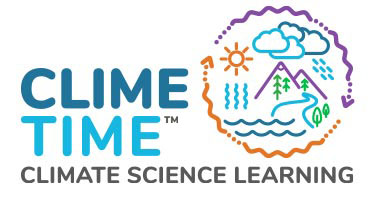Earth systems
and changes at Coyote Canyon Mammoth Site

Overview
Earth is ever-changing, and Earth Science education aims to teach students about the ways that humans influence landscape and climate. The Next Generation Science Standards (NGSS) have many standards that help us understand Earth’s dynamic nature. ESD 123’s project used local phenomena-based experiences to deepen teacher understanding about how to raise awareness about Earth’s changes across the past, present, and future. Using local places to illustrate the Standards both creates equity for students and provides examples about how to mitigate climate-related changes in the future.
What We Did
ESD 123 serves 23 school districts, many of which contain rural and remote schools. ESD 123 partnered with the Coyote Canyon Mammoth Site and the REACH Museum in order to facilitate hands-on learning experiences to K-8 teachers across the region.
From September 2019 through April 2020, 17 K-8 teachers engaged in four in-person meetings, followed by one optional field excursion. The goal was for teachers to see how applying the Next Generation Science Standards to local phenomena is essential to better understand the standards and before developing formative assessments for their students.
Teachers engaged in research and data collection, learning the process for collecting fossils and how data based on those findings is documented and analyzed. Teachers used their visit to the Coyote Canyon Mammoth Site to visualize how conducting research with an authentic learning experience is valuable for understanding concepts. They subsequently applied this knowledge to create phenomena-based formative assessments and collected student data from those assessments. The assessment below demonstrated students’ understanding of daily weather patterns, both individually by day and also by month. Students were able to practice data tracking while conducting their own observations of the weather.
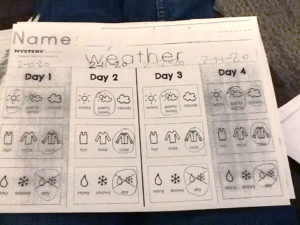 The REACH Museum organized an Ice Age Floor tour in which Gary Kleinknecht, Education and Outreach Director of Mid-Columbia Basin Old Nature Education Science took the teachers out on a bus starting at the Wallula Gap Area. When the teachers stood along the Columbia River, observing the massiveness of the water, the carving of the “gap” from the Ice Age Floods became evident. From the Wallula Gap, the bus took the teachers through the Washtucna Coulee where the Loess Hills could be seen, which demonstrated to teachers the way sediment can be redeposited. The final destination on the teachers’ tour was Palouse Falls, where the carving of water over the thousands of years illustrated to the teachers the effects of Earth’s changes.
The REACH Museum organized an Ice Age Floor tour in which Gary Kleinknecht, Education and Outreach Director of Mid-Columbia Basin Old Nature Education Science took the teachers out on a bus starting at the Wallula Gap Area. When the teachers stood along the Columbia River, observing the massiveness of the water, the carving of the “gap” from the Ice Age Floods became evident. From the Wallula Gap, the bus took the teachers through the Washtucna Coulee where the Loess Hills could be seen, which demonstrated to teachers the way sediment can be redeposited. The final destination on the teachers’ tour was Palouse Falls, where the carving of water over the thousands of years illustrated to the teachers the effects of Earth’s changes.
What We Learned
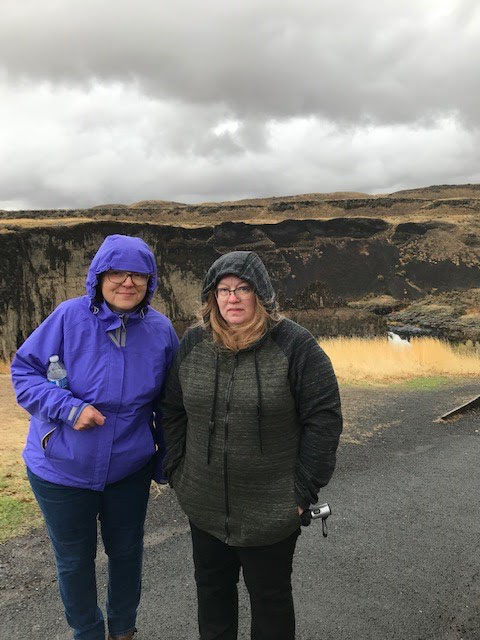 Due to the unique nature of the Coyote Canyon Mammoth Site and the Ice Age Flood tour, teachers were able to grasp the significance of using local phenomena in their Earth Science instruction. The hands-on collection of fossils and subsequent data analysis illustrated to teachers that students are best engaged when applying skills and learning to local and authentic environments. As work continues, establishing a more foundational understanding of Earth’s systems should be utilized, as some teachers did not have as broad an understanding as originally anticipated. One teacher in Kennewick School District reflected, “I think this course deepened my knowledge of changes in the local area, but also in how to present that knowledge as a phenomenon to students to get them to think about how they might approach the learning of the material. I think it will affect my instruction in that I will use more phenomenon-based learning strategies in my classroom.”
Due to the unique nature of the Coyote Canyon Mammoth Site and the Ice Age Flood tour, teachers were able to grasp the significance of using local phenomena in their Earth Science instruction. The hands-on collection of fossils and subsequent data analysis illustrated to teachers that students are best engaged when applying skills and learning to local and authentic environments. As work continues, establishing a more foundational understanding of Earth’s systems should be utilized, as some teachers did not have as broad an understanding as originally anticipated. One teacher in Kennewick School District reflected, “I think this course deepened my knowledge of changes in the local area, but also in how to present that knowledge as a phenomenon to students to get them to think about how they might approach the learning of the material. I think it will affect my instruction in that I will use more phenomenon-based learning strategies in my classroom.”
Because of the unique topics for each session, teachers gained a broad understanding of different local phenomena, such as the effects of ocean currents on today’s weather or the cyclic and seasonal nature of natural phenomena of bees and wildflowers in the meadows of Mt. Rainier. Teachers were able to grasp how Earth’s system changes have been affected by humans, as well as what happens when natural occurrences are out of sync. Using this knowledge, teachers expanded their understanding of Earth changes from the past, present and for the future. Teachers were also better able to create formative assessments using the NGSS standards based on local phenomena because they engaged with this work themselves.
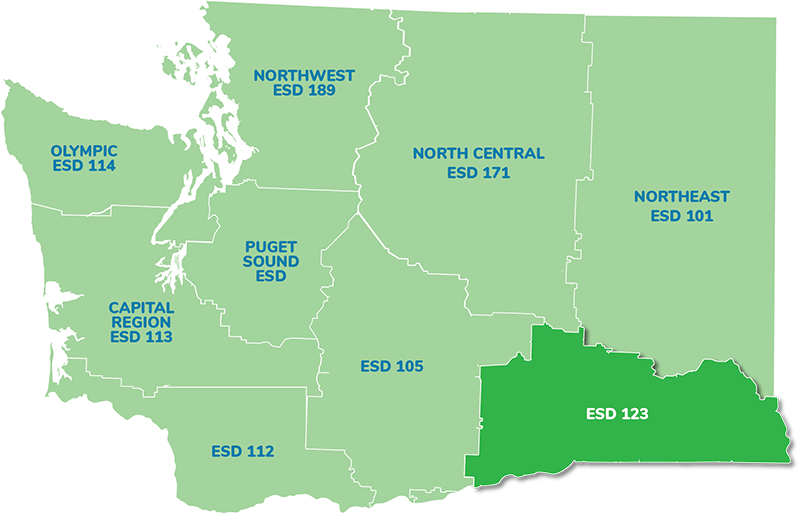
Project Reach
Teachers
Students
Project Partners
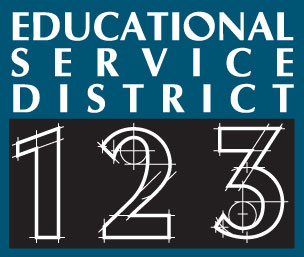
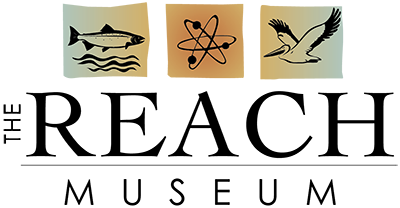

Feedback
I have lived in this area most of my life and that was the first time I really “saw” the beauty and geology of this area—why hills are where they are, what the different layers in a cliff face meant. This course opened my eyes to the beauty and science that existed in my own area. The answering of how and why is what fuels scientific interest.
While in the past I followed NGSS and used inquiry activities, I plan to change my instruction to incorporate phenomena as an intentional lead in, and use more 3D skills intentionally throughout the year.
Contact
For more information contact:
Lorianne Donovan, Regional Science Coordinator, ESD 123
ldonovan@esd123.org
